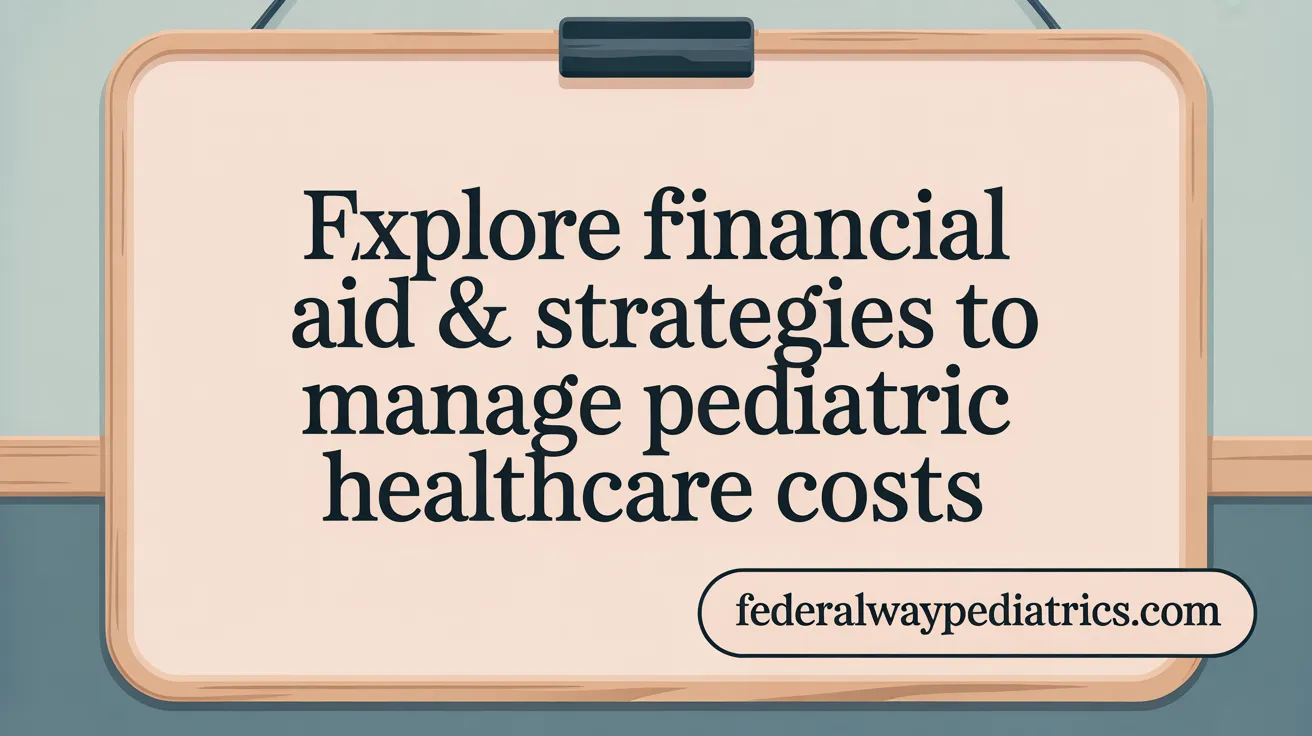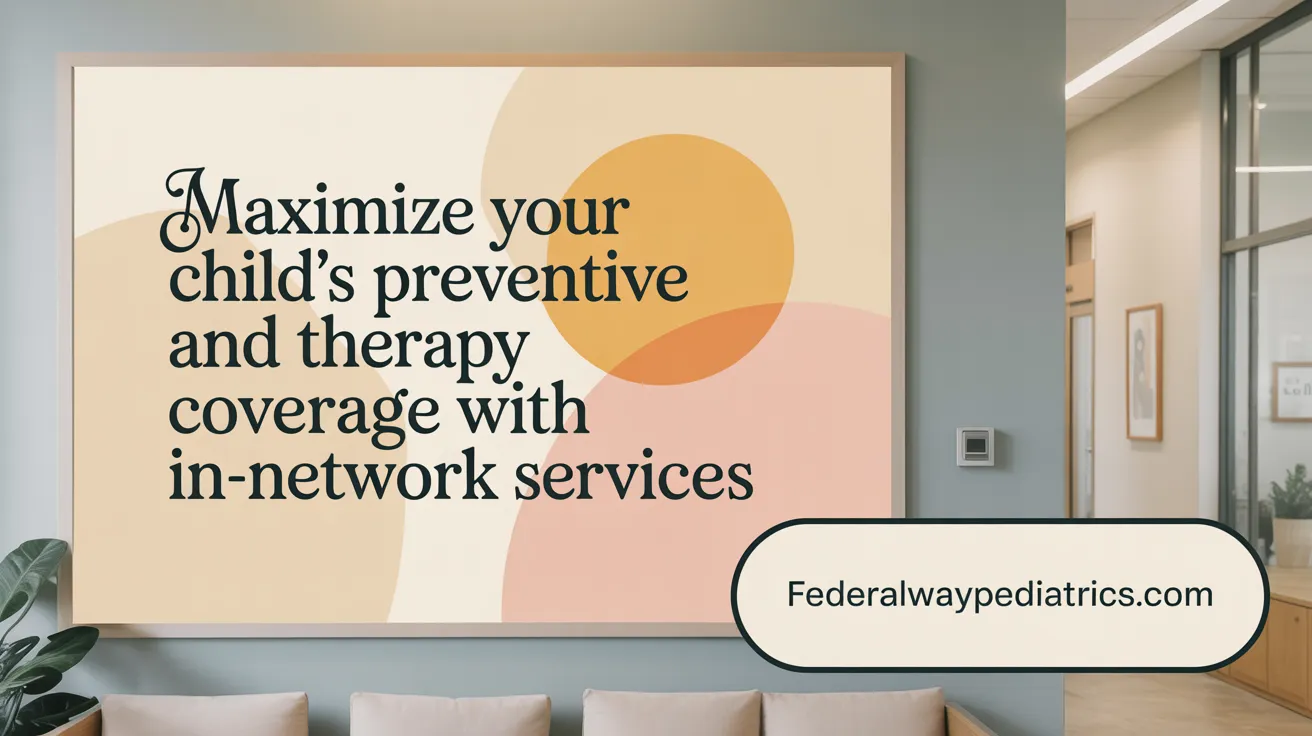Understanding the Pediatric Insurance Maze
For families with children, navigating the world of pediatric health insurance can be overwhelming yet essential. From understanding public programs like Medicaid and CHIP to choosing private insurance that accommodates specialized needs, parents face numerous decisions. This guide unpacks key facets of insurance coverage, focusing on support for children with diverse health profiles, financial assistance, and strategies to secure continuous, comprehensive care in a complex healthcare landscape.
Public Insurance Programs: Medicaid and CHIP Essentials

What are the key features of Medicaid and CHIP for children's health coverage?
Medicaid and the Children's Health Insurance Program (CHIP) are vital public insurance programs offering health coverage for children from low- and moderate-income families.
Medicaid serves children in families with limited incomes, providing comprehensive benefits such as preventive care, emergency services, prescriptions, dental and vision care, and hospital services. It supports a broad range of needs including well-child visits, immunizations, and specialized care.
CHIP complements Medicaid by targeting families whose income is too high to qualify for Medicaid but not enough to afford private insurance. CHIP covers services like routine check-ups, immunizations, dental and vision care, prescriptions, hospital and emergency care, and behavioral health services.
Both programs are administered at the state level within federal guidelines, leading to state-specific variations in eligibility and coverage details. Families can usually apply year-round, with coverage often beginning immediately upon eligibility confirmation.
Financial protections are built into these programs. CHIP costs may include modest copayments or premiums, but these are capped to not exceed 5% of the family's income annually, ensuring affordability.
These programs play a crucial role in maintaining healthcare access for millions of children, especially in families with low and moderate incomes, significantly reducing uninsured rates and supporting children's health and well-being nationwide.
Private Insurance Options and Challenges for Families
What should families know about private insurance options for children?
Families seeking private insurance have several options, including employer-sponsored plans, Affordable Care Act (ACA) Marketplace plans, short-term coverage, and individual or family policies. ACA Marketplace plans are among the most comprehensive, covering a broad range of pediatric services—such as preventive care, routine immunizations, emergency and hospital services, mental health care, and prescription medications.
Understanding the details of each plan is vital. Families should carefully review deductibles and copayments, provider networks to ensure access to preferred pediatricians and specialists, and confirm coverage for dental and vision services, which may not be included in all plans (child's health insurance coverage).
Short-term health plans can provide quick, temporary coverage for lapses but often exclude children’s pre-existing conditions and impose limits on benefits. They generally do not meet the ACA’s federal market requirements and can result in significant gaps in care (Individual health insurance plans).
Coverage variations and costs associated with private plans
Private insurance coverage and costs vary widely. While ACA plans often offer subsidies based on income and provide extensive benefits, costs such as premiums, copayments, and deductibles can still be substantial, especially for families with children who need ongoing care (Key Issues in Children's Health Coverage).
Challenges with insurance adequacy and out-of-pocket expenses
A major concern with private insurance is underinsurance—where families face high out-of-pocket expenses or limitations that restrict access to necessary health services. This issue disproportionately affects children with complex or special health care needs, who may encounter coverage denials or expensive cost sharing, leading to delayed or foregone care (Underinsurance Among Children in the United States, Insurance coverage for children with special health care needs).
Benefits of managed care plans such as HMO, PPO, EPO, POS
Managed care options like Health Maintenance Organizations (HMO), Preferred Provider Organizations (PPO), Exclusive Provider Organizations (EPO), and Point of Service (POS) plans offer various networks and referral requirements. HMOs typically require choosing a primary care provider and referrals for specialists, often with lower costs and coordinated care. PPOs provide more flexibility in choosing providers but may involve higher premiums and out-of-pocket costs. EPOs blend aspects of HMOs and PPOs, requiring network use but no referrals. POS plans combine features of HMO and PPO, offering some out-of-network coverage.
Families must weigh coverage details, network constraints, and costs to choose a plan that best suits their child’s medical needs and financial situation (Types of health insurance plans, Choosing insurance coverage.
Navigating Coverage for Children with Special and Rare Health Needs

How do pediatric insurance programs address children with medical complexity and rare diseases?
Children with medical complexity and rare diseases often need specialized healthcare, including genetic testing for rare diseases, various therapies, durable medical equipment, and coordinated medical services tailored to their unique conditions. Public insurance programs such as Medicaid and CHIP for children play an essential role in supporting these needs by providing coverage for a broad range of services. For instance, Medicaid includes the Early and Periodic Screening, Diagnostic, and Treatment (EPSDT) benefit, which mandates comprehensive health screenings and treatments for eligible children.
Despite these programs, families frequently encounter difficulties. Insurance plans may issue denials or delays for services and equipment critical to their child's care. The eligibility determination process can be nontransparent, forcing families to manage multiple insurance plans and appeal decisions using detailed medical documentation. This bureaucratic complexity adds to the emotional and financial burden on families, as detailed in studies of insurance barriers for rare disease care and families of children with medical complexity.
Support systems are crucial in navigating these challenges. National organizations and online communities offer guidance and advocacy resources. Some specialized research and genomic testing centers provide no-cost genomic testing for qualifying families and offer ongoing support to help manage care and insurance processes. Strengthening policies to improve transparency, expedite authorizations, and expand coverage options would significantly enhance access to necessary care and reduce hardship for children with rare and complex medical needs and their families.
Financial Assistance and Cost Management Strategies for Families

What financial resources and strategies can help families manage pediatric healthcare costs?
Families managing pediatric healthcare expenses have access to a variety of financial aid programs to help reduce the burden. Key resources include:
- Hospital Aid Programs: Many hospitals offer assistance to offset medical bills based on financial need (Hospital aid programs for children).
- Free Medication Programs: Some organizations provide free or low-cost medications for children requiring ongoing treatments (Free medication programs.
- Nonprofit Grants: Foundations offer grants for families facing high costs from rare diseases or specialized therapies (Nonprofit medical grants.
- Government Programs: Medicaid and the Children’s Health Insurance Program (CHIP) provide subsidized coverage for eligible children, reducing out-of-pocket costs.
- Tax Deductions: Families may claim deductions for medical expenses to lower taxable income (Tax deductions for medical expenses.
When insurance claims are denied, parents should promptly appeal using detailed letters and documentation from healthcare providers. They can request external reviews, which may overturn initial denials (Appealing denied insurance claims.
Understanding health insurance cost-sharing is essential for budgeting. Families should familiarize themselves with premiums (monthly payments), deductibles (amount paid before coverage starts), copayments (fixed fees per service), and coinsurance (percentage of costs paid) (Choosing insurance for children's medical needs.
Additional support comes from organizations like the National Society of Genetic Counselors for genetic testing cost guidance (National Society of Genetic Counselors and therapy grants for specialized pediatric therapies (Financial assistance for medical costs.
Connecting with peer support groups, both online and locally, offers valuable emotional support and practical advice for navigating insurance and financial challenges (Peer support groups for parents, Emotional support for families with rare diseases.
By combining these financial resources, appeals, and informed insurance navigation, families can better manage the costs of their child’s healthcare needs.
Preventive Care and Therapy Coverage: Maximizing Insurance Benefits

Preventive health services covered without cost-sharing
Most health insurance plans are required to cover a wide range of preventive health services for children without any cost-sharing. This means that when families use in-network providers, they usually pay no copayments, deductibles, or coinsurance for these essential services. Covered preventive care typically includes well-child doctor visits, immunizations, screenings for developmental milestones, vision and hearing tests, and assessments for behavioral and physical health issues. Utilizing these covered preventive services is vital for early detection and maintaining a child's overall health.
Pediatric therapy services under ACA and IDEA
Therapy services such as physical, occupational, speech, and applied behavior analysis (ABA) therapy are commonly covered under both private and public insurance plans due to mandates from the Affordable Care Act (ACA) and the Individuals with Disabilities Education Act (IDEA). These laws prohibit insurers from denying coverage due to pre-existing conditions and require coverage for necessary therapeutic interventions. Therapy coverage helps children with developmental delays and disabilities access essential treatments from birth through age 21, supporting their growth and functional abilities.
How to verify insurance coverage for therapies
Before starting therapy services, families should carefully review their insurance policies to understand coverage details. This includes verifying which therapies are covered, limits on the number of visits, approved providers, and any out-of-pocket costs such as copays or deductibles. Contacting the insurance provider and consulting resources like the National Society of Genetic Counselors or therapy providers can help clarify specifics and avoid unexpected expenses.
Utilizing in-network providers for no-cost preventive care
To maximize insurance benefits and minimize costs, families are advised to select in-network providers for both preventive care and therapy services. In-network providers have agreements with insurance companies to offer services under negotiated rates, often eliminating or reducing copayments for covered preventive visits and therapies. This strategic choice helps families ensure affordable, timely care while fully utilizing the benefits their insurance offers.
By understanding covered services, confirming therapy coverage, and choosing in-network providers, families can ensure their children receive comprehensive preventive care and therapy supports without undue financial burden.
The Role of Life Insurance and Holistic Family Protection

Why is life insurance an essential component of family financial planning for parents?
Life insurance plays a critical role in securing a family's financial future. For new parents, it acts as a financial safety net by replacing lost income and covering vital expenses like mortgage payments, childcare, education, and medical bills if a parent unexpectedly passes away. For more insights, see Life insurance basics and benefits for new parents and 5 Life Insurance Tips for New Parents.
Types of life insurance suitable for families
Families typically choose between term and permanent life insurance. Term life insurance is an affordable option offering coverage for a specific period, often matching children's dependent years. Permanent life insurance provides lifelong protection and builds cash value over time. Learn more about Life insurance options for families and Family Life Insurance coverage and benefits.
Financial security and coverage for dependent children
Both working and stay-at-home parents need life insurance. Stay-at-home parents contribute significant caregiving services, which have replacement costs. Recommended coverage amounts usually range from 10 to 15 times the annual income, ensuring comprehensive financial support. Explore importance of life insurance for stay-at-home parents and Family term life insurance benefits.
Considerations in designating beneficiaries and coverage amounts
When designating beneficiaries, it's prudent to avoid naming minors directly. Instead, setting up a trust or appointing an adult caretaker ensures funds are appropriately managed. Purchasing life insurance early, while young and healthy, can reduce premium costs. Refer to Using trusts for minor beneficiaries and Designating beneficiaries for children's life insurance.
Incorporating life insurance into family financial planning provides peace of mind and strengthens financial resilience during unforeseen events, helping families maintain their standards of living and children's opportunities. For comprehensive guidance, see Life insurance tips for new parents.
Empowering Families Through Knowledge and Resources
Understanding the multifaceted world of pediatric insurance equips families to make informed decisions and ensures their children receive essential healthcare without undue financial strain. Utilizing public programs like Medicaid and CHIP can provide comprehensive benefits for those eligible, while private insurance requires careful evaluation of coverage and costs. For children with special health care needs, navigating insurance complexities demands persistence, advocacy, and support networks. Financial assistance programs and a clear grasp of preventive and therapy service coverage can mitigate burdens. Integrating life insurance planning strengthens family security. Ultimately, proactive engagement, awareness, and resourcefulness empower families to navigate pediatric insurance complexities confidently and safeguard their children's health and future.
